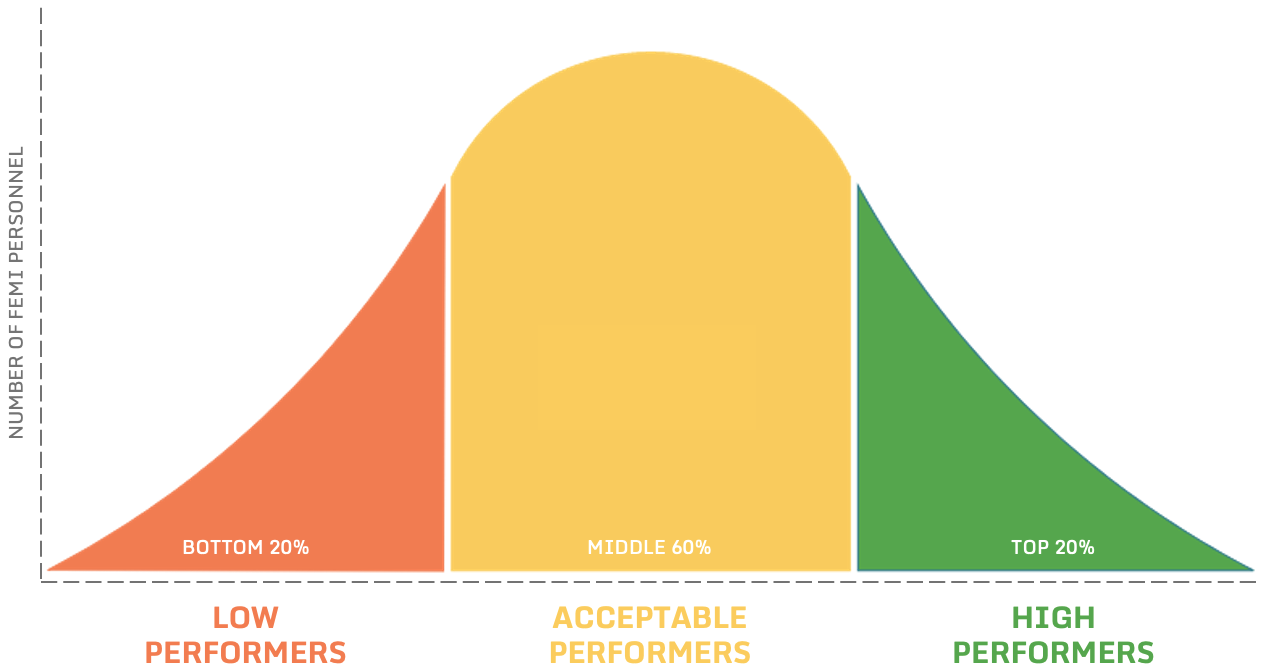Introduction
Are you a high-performing Inspectioneer? First of all, what is an Inspectioneer? In my mind, it is someone whose primary career/skill focus is fixed equipment mechanical integrity (FEMI) which would include a lot of skill sets and titles (e.g., inspector, inspection supervisor, inspection specialist, inspection engineer, NDE specialist, FE reliability engineer, RBI engineer, corrosion/materials specialist, metallurgist, etc.). With that in mind, this article is all about what I believe it takes to become a high-performing Inspectioneer.
To begin with, there are a lot of characteristics that differentiate high-performers from the “Johnny Paycheck” type (not the singer-songwriter of old, but rather the person who’s just doing a FEMI job to collect a paycheck). Figure 1 is a bell curve that shows where high-performing Inspectioneers usually place on the distribution of the three primary performance levels of all FEMI personnel.

This bell curve does not mean that acceptable performers (the middle gold zone in Figure 1) don’t possess any of the following high-performance characteristics. They often do, and their contributions to the FEMI discipline are much appreciated and even necessary. We cannot run our industry with only the top 20% of high-performing Inspectioneers. It takes a lot of valuable FEMI contributions from that 60% in the middle zone of Figure 1. However, high performers typically have more of the following characteristics and are usually higher up on the performance rating scale. As a result, they typically enjoy their jobs/careers more, often have greater success in keeping operating facilities safer and more reliable, and make greater contributions to the advancement of the FEMI discipline. They are also typically more appreciated by their management and, therefore, are usually paid more over the long run. Also, I recognize that as a career Inspectioneer, people can progress through the ranks from trainee to journeyman to senior-level contributors, and even to subject matter experts (SMEs). As they make this progression, they will have the opportunity to attain and display more of these characteristics.
With that said, let’s look at some of the characteristics in which these higher performing Inspectioneers often exhibit. Below, for the sake of organization, I’ve tried to categorize these higher performance characteristics into six broad categories as shown in Figure 2.

















Comments and Discussion
Add a Comment
Please log in or register to participate in comments and discussions.